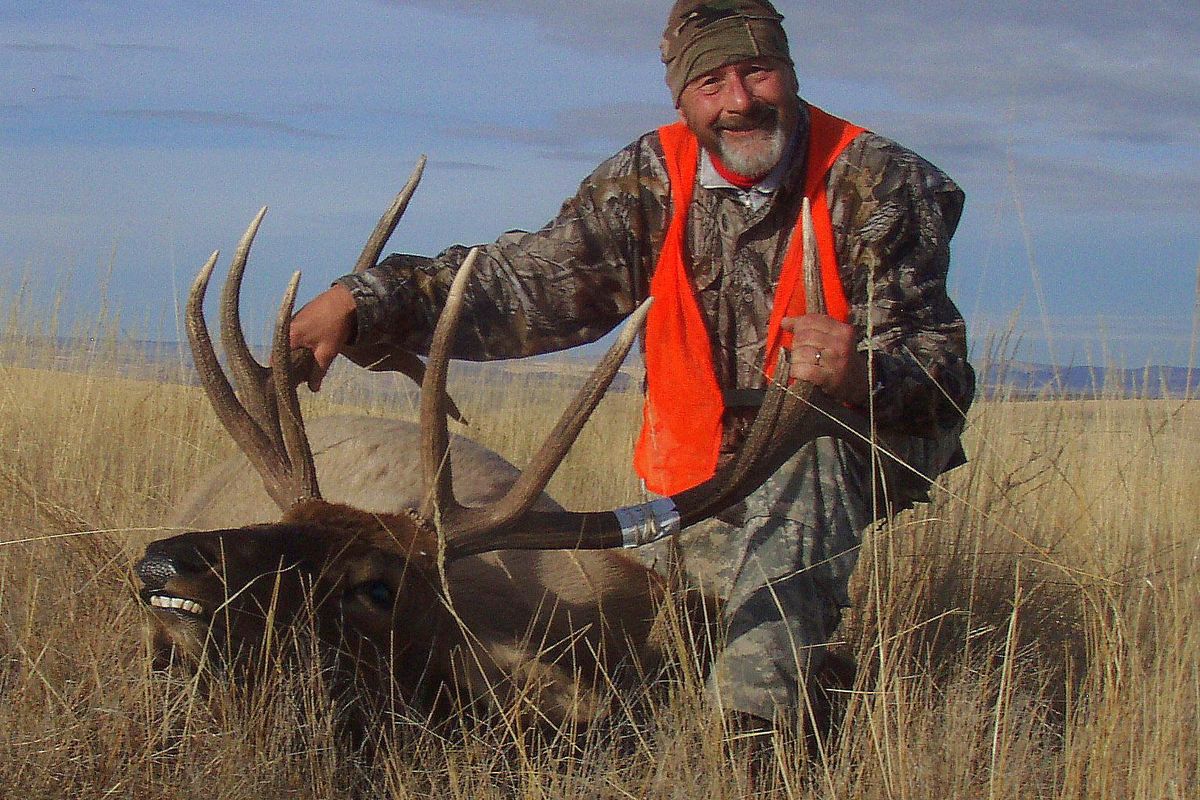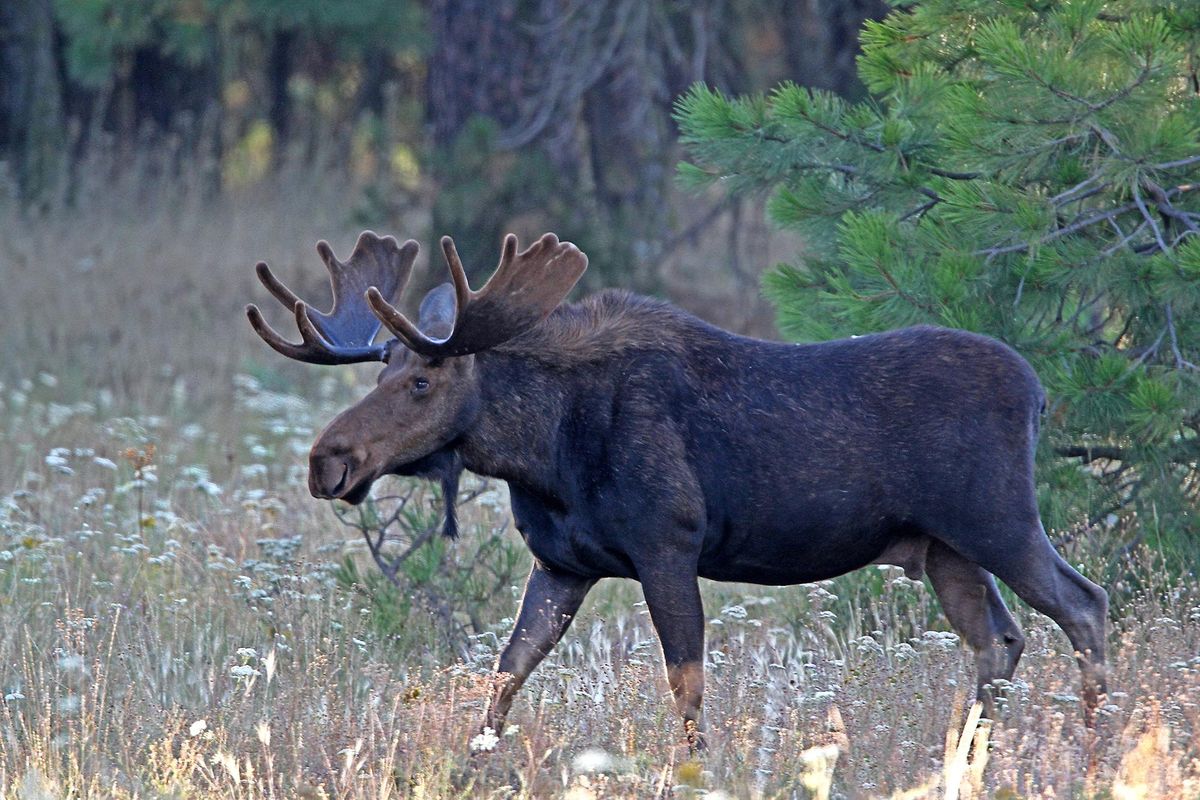Points system bittersweet boost to big-game permit drawing odds
Stan Mrzygod of Spokane recovered from back surgery a few months before heading out to fill a coveted tag for a trophy bull elk in the Colockum Wildlife Area of Central Washington. (COURTESY / COURTESY PHOTO)
Since 1996, Washington has employed a weighted point system for drawing special big-game hunt permits to give unsuccessful applicants higher odds of drawing a permit in future lotteries.
Hunters accrue a point each time they apply in a category, such as Quality Elk, Bull Elk, Antlerless Elk, Youth Elk and so on. If they succeed in drawing a tag, they begin the next drawing year with zero points in that category.
Washington’s system squares the number of points to give a hunter progressively better odds. One point squared is one extra opportunity for the computer to assign a random number. Ten points squared is 100 random numbers. The computer would assign that hunter the lowest random number of the 100 generated. That’s the number he would take into the lottery drawing.
If the applicant’s number is 1, he’ll get a hunt for sure. If his number is 2, he still may draw a permit, but he won’t get his first choice if the No. 1 applicant beat him to a hunt that had only one permit available. And so on.
This is why hunters should mark multiple choices on their permit application.
Because the numbers are generated randomly, even a first-time hunter has a chance to beat the hunters with 30 points for a Quality Elk tag.
“It happens,” said Evan Yett of the Washington Fish and Wildlife Department’s licensing division.
A hunter is allowed to pay the permit application fee and accrue a point even if he does not apply for a hunt. Some hunters do this when they know they will not be available for the hunting season because of a commitment or medical issue.
But hunters can apply and gain points only in categories for which they qualify. So a hunter younger than 65 before the season could not buy “ghost points” for the senior elk category.
In 2010, the number of categories for big game permits was expanded to 29. Instead of just antlerless and “any bull” permits for elk, several new categories were added such as “Quality Elk and Youth Elk.”
The points a hunter had for elk in 2009 transferred to all elk categories in which he applied in 2010. Hunters who drew elk permits in 2009 were unfortunate because they began all old and new elk categories in 2010 with zero points.
Each year, the Washington “Big Game Hunting Seasons & Regulations” pamphlet helps anglers calculate their odds of success in permit drawings. A chart lists the number of applicants and the average number of points held by hunters who drew permits for each hunt in the previous year.
In 2016, for example, early-season Colockum Quality Elk Hunt Choice 2019 had 1,732 applicants for one permit. The hunter who drew that permit had 21 points.
Meanwhile, an average of 12 points was listed for hunters who drew a permit for the general season Colockum Quality Elk Hunt Choice 2020, which offered 22 permits. That means some of the hunters likely had less than 12 points while others likely had more.
Some states have different points programs. In Montana, hunters must pay for a point at the time of application, $2 for residents and $20 for nonresidents. Utah offers preference points that almost guarantee being drawn when a hunter reaches the top level of points holders.
Unlike Utah’s preference system, Washington’s system does not guarantee a permit to the applicants with the most bonus points.
A hunter who’s applied unsuccessfully for a certain permit every year since Washington’s points program began would have 22 points.
However, one hunter has 34 points in the Quality Ek category, according to a report Yett generated from the licensing data base last week.
The extra points likely were acquired by helping with fish and wildlife enforcement investigations, Yett said. The state awards 1-10 points as an incentive for hunters to report a poacher or otherwise help solve a case.
Of course, higher demand for a particular hunt choice decreases the chance of drawing a permit. The chances relate not only to the number of applications but also how the points are stacked.
According to Yett’s report, 318 hunters in the license data base have 20 or more points in the Quality Elk category. Five hunters have 30 or more while 51,282 have one point.
That’s a lot of competition. But it’s not as much points-related competition as in the “Any Moose” category, where 739 hunters have 20 or more points and four hunters have 24 points, the highest in this category.

